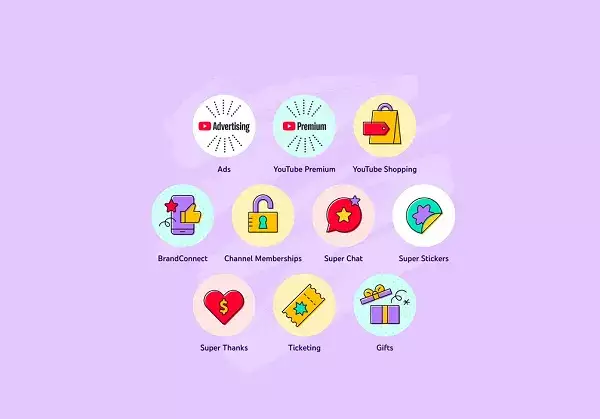YouTube has transformed from a platform for simple video sharing into a full-fledged monetization hub for creators around the globe. It’s astonishing how this platform has adapted to the evolving landscape of digital content, presenting a plethora of revenue-generating avenues that cater to the unique voices of creators. However, the question arises: does this monetization truly empower artists, or does it commodify creativity in a way that compromises artistic integrity?
Analyzing the Monetization Landscape
As YouTube broadens its offerings for revenue generation, it’s imperative for creators to understand the variety of monetization methods available. The platform currently boasts ten major avenues for monetizing content, ranging from simple advertisements to more complex affiliate marketing strategies. This extensive range can be seen as beneficial in providing creators with options tailored to their specific content styles and audiences.
Simplistically, in-stream ads serve as the backbone of YouTube’s monetization structure. By joining the YouTube Partner Program, creators can display ads within their videos, with the latest algorithmic advancements allowing for improved ad placement controls. While this feature seems straightforward, it raises a crucial point: are creators truly in control of their narrative if their content is punctuated by ads? The nature of these interruptions could dilute the narrative flow and perhaps push content creators into prioritizing ad-friendly formats over original storytelling.
The Role of YouTube Premium
YouTube Premium emerges as a crucial player in the monetization game, where subscribers pay for an ad-free experience. Creators reap most of the revenue generated through this service. However, introducing alternatives like YouTube Premium Lite, designed to reduce costs for viewers, complicates the landscape. While increasing affordability may seem beneficial, it opens up the question of whether such changes diminish earnings for creators as the platform navigates the thin line between accessibility and profitability.
Diving Into the Shopping Ecosystem
YouTube Shopping is yet another avenue where creators can link products directly within their videos—a development that feels both innovative and exploitative. While it’s great that creators can earn a commission on featured products, it shifts the focus from content creation to commercial promotion. YouTube BrandConnect furthers this sentiment by linking creators directly with brands, integrating this partnership into the world of Shorts. The blurred line between authentic content and product placement demands that creators tread carefully; the essence of their creative journey should not be overshadowed by commercial interests.
Interactivity as a Revenue Mechanism
Features like Channel Memberships and Super Chat invite fans to engage financially, transforming audience interaction into a source of revenue. While these initiatives foster a closer connection between creators and their fans, one must question whether true engagement can exist when monetary exchanges are involved. Super Stickers and Super Thanks echo this sentiment, packaging interactive features as monetizable assets. It raises ethical questions: do these transactional elements enhance the communal spirit of content sharing, or do they commodify human connection?
Innovating through Ticketing and Gifts
The introduction of ticketing for concerts and events within live streams adds another dimension for creators, particularly in the music industry. This feature not only helps artists generate income but also strengthens audience loyalty. Similarly, the premium gifts system added last November allows creators to receive visual recognition from their audiences, enriching the experience but also fostering a pattern of consumption over community.
While YouTube claims to have paid more than $20 billion annually to creators, it’s essential to reflect on the implications of such a financial landscape. Artists are offered multiple streams of income, certainly, but at what cost? The commercialization of art can often dilute its essence, transforming it from a passion to a product. The balance between sustenance and creativity is precarious, and as creators grapple with these monetization options, they must consider how each choice aligns with their artistic vision.
The digital landscape continues to evolve, presenting opportunities and challenges that demand critical reflection. YouTube’s monetization mechanisms undoubtedly provide a financial lifeline, but they also prompt an urgent dialogue about the impact of capitalism on creative expression. Will creators charge for their content, or will they choose to keep the integrity of their art intact amidst this shifting terrain? The answer lies within each creator’s journey as they navigate the expansive possibilities YouTube has to offer.

